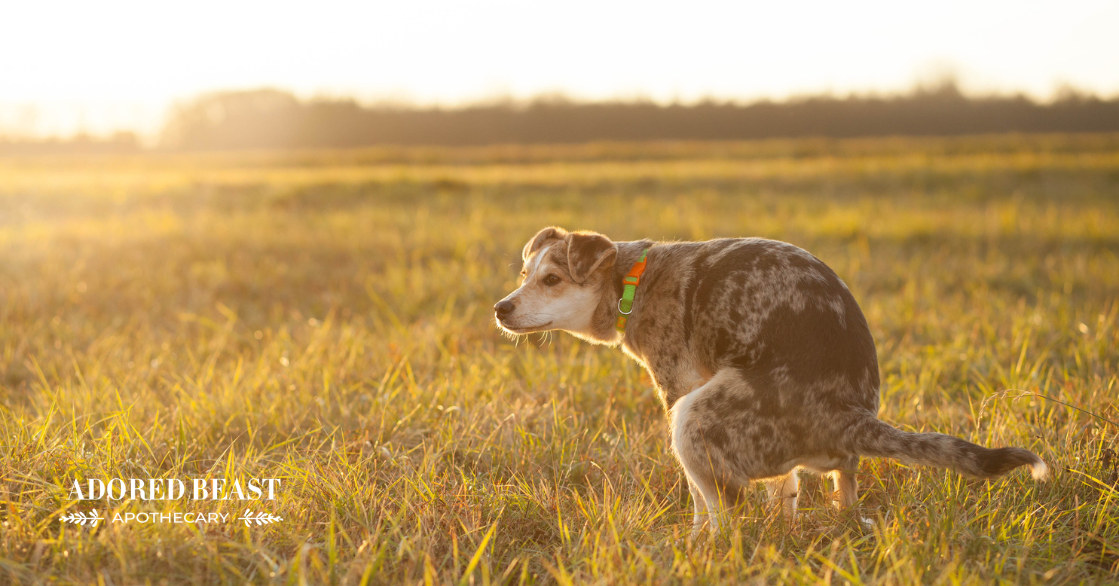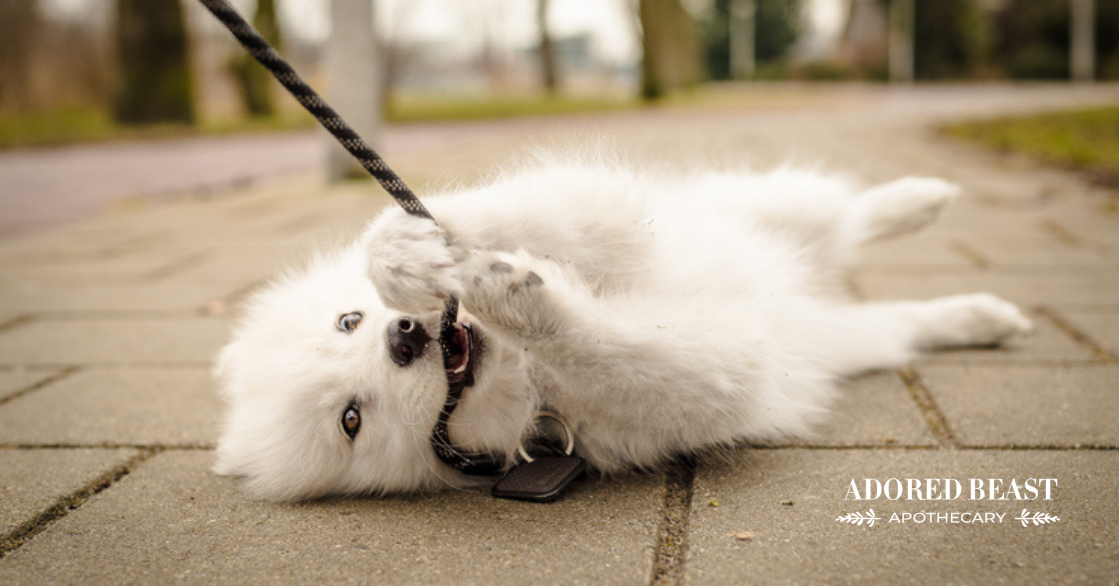How often do you check out your dog’s poop?
It might seem like a funny question, but it’s actually really important. Our furry friends rely on us to monitor their health, and one indicator of their well-being is the color of their poop.
While it may not be the most pleasant topic, it’s good to know what different poop colors might mean and what you can do to help your pup get back to normal.
So, without further adieu, here’s our easy-to-follow Dog Poop Color Chart!
Dog Poop Color Chart
Seeing a rainbow in the pile? This dog poop color chart will help determine the cause. See below for more details!

1. Brown
Brown is the ideal color for dog poop and indicates a healthy digestive system. This color is due to the presence of bile produced by the liver, which aids in the digestion process. If your dog’s poop is consistently brown and well-formed, it’s a good sign that their diet and digestion are on track.
2. Green
Green poop in dogs can be caused by several factors:
- Dietary Changes: Eating a lot of grass or sudden dietary changes can lead to green poop. Phyto Synergy sometimes gives our dogs’ poop a greenish tinge.)
- Gastrointestinal Issues: In some cases, green poop might indicate a more serious issue like an upset stomach or infection. It may also indicate the your dog may have gotten into rodenticide. In this case, the poop will usually be bright, teal green instead of dark green. This is a medical emergency.
What to do: Monitor your dog’s diet and ensure they are not excessively consuming grass. If the green color persists (or is more teal/birght green) or is accompanied by other symptoms like diarrhea or vomiting, consult your vet.
3. Orange/Yellow
Yellow poop can be a sign of:
- Liver or Gallbladder Issues: Problems with these organs can cause a lack of bile in the stool, resulting in a yellowish color.
- Dietary Factors: Certain foods or food intolerances can lead to yellow poop.
What to do: Provide a balanced diet and avoid feeding your dog fatty foods. If yellow poop persists, consult your vet for further evaluation.
4. Red or Bloody
Red or bloody poop can be alarming and may indicate:
- Bleeding in lower digestive tract: This could be due to several factors, including straining to poop, IBD, or ingestion of a foreign object.
- Parasites or Infections: Certain parasites or infections can cause bloody stool.
What to do: Monitor their next poops. If the bleeding stops, perhaps introduce some fibre to help things come more smoothly. If the blood continues, contact your vet.
5. White or Gray
White or gray poop is abnormal and could be a sign of:
- Too much bone in the diet: if you’re overdoing it with the bone, the poop may look light in color and appear chalky or crumbly.
- Pancreatic Issues: Problems with the pancreas can affect the color and consistency of stool. This could mean there’s too much fat in the diet or there’s a problem with the pancreas, like exocrine pancreatic insufficiency (EPI).
- Liver Problems: Bile duct obstruction can lead to pale-colored stool.
What to do: If you suspect bone is the culprit, cut back and keep an eye on it. If not, contact your vet promptly.
6. Brown with White Spots
Sometimes white specks in poop can be undigested food – sometimes bits of raw bone will show up like this. However, sometimes it could be worms. Are they moving? That’s a sign that they’re parasitic in nature.
What to do: Once you know what type of worms/parasite are present (take a stool sample into your vet) you can try tackling the worms holistically (check out this post from Rita Hogan), or follow your vet’s advice.
7. Black
Black dog poop, particularly if it’s tarry-looking, often means there’s digested blood coming from the GI tract—aka some type of internal bleeding. Black stools can also be a side effect of certain medications, like steroids or non-steroidal anti-inflammatory drugs (NSAIDs).
What to do: Seeking immediate veterinary attention is a good idea, as it could be a serious condition requiring prompt diagnosis and treatment.
Other Tips for Healthy Poop
As mentioned, when it comes to poop, brown and firm is what we want to see!
And there are several things that you can do on a regular basis to encourage regular bowel movements!
- Monitor Diet: Ensure your dog’s diet is well-balanced and free from potential irritants or allergens.
- Hydration: Keep your dog hydrated with fresh water to aid digestion.
- Probiotics: Consider adding probiotics to your dog’s diet to support gut health.
- Regular Exercise: Encourage regular exercise to promote overall health and digestion.
We can learn a lot about our dogs’ health by looking at their poop! And, while the color of your dog’s poop can provide clues about their health, it’s essential to consider other factors such as consistency, frequency, and any other symptoms that seem out of the ordinary. So keep an eye on those piles, and if you think something is off, consult the dog poop color chart and listen to your gut!












![[RESEARCH] Is Herbicide Safe for Dogs?](https://blog.adoredbeast.com/wp-content/uploads/2025/06/herbicides-safe-for-dogs-103x55.png)